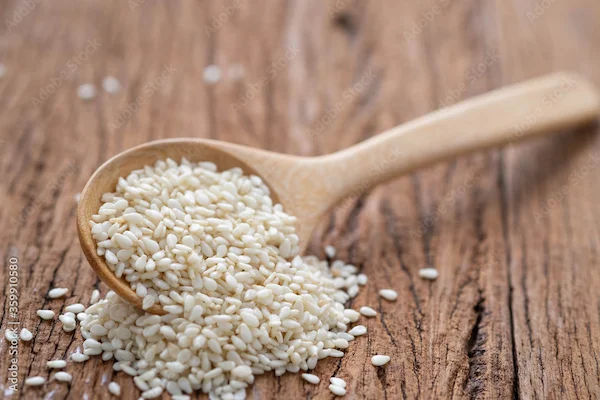Guide to Intermittent Fasting
Learn about intermittent fasting, its methods, health benefits, and tips for safe practice. Discover how it supports weight management and overall wellness.

Written by Dr. M L Ezhilarasan
Reviewed by Dr. Shaik Abdul Kalam MD (Physician)
Last updated on 4th Sep, 2025

In a world obsessed with what to eat, a powerful wellness trend is shifting the focus to when to eat. Intermittent fasting (IF) isn't just another fad diet; it's an evidence-backed eating pattern that cycles between periods of eating and fasting. It’s less about restricting calories and more about timing them to work in harmony with your body's natural rhythms. This approach has been linked to a host of benefits, from weight loss and improved metabolic health to enhanced brain function and longevity. But with so much information available, it can be overwhelming to know where to start. This definitive guide will demystify intermittent fasting, explore the science behind it, outline the most popular methods, and provide practical tips to help you implement it safely and effectively into your lifestyle. Whether your goal is to shed pounds, boost your energy, or simply optimize your health, this guide will equip you with everything you need to know.
What is Intermittent Fasting (IF)?
Intermittent fasting is an umbrella term for various eating patterns that alternate between voluntary fasting and non-fasting periods over a defined cycle. Unlike traditional diets that prescribe specific foods, IF is solely concerned with the timing of your meals. It’s a pattern of eating, not a diet in the conventional sense.
The core principle is to allow your body extended periods without food intake. During a fast, several things happen on a cellular and molecular level. Insulin levels drop significantly, facilitating fat burning. Your cells also initiate important repair processes, including the removal of waste material (autophagy). Hormone levels are adjusted to make stored body fat more accessible.
Intermittent fasting simply extends this natural fasted state, allowing your body to tap into its fat stores more effectively.
Consult a Top Nutritionist
Top Science-Backed Benefits of Intermittent Fasting
The benefits of IF extend far beyond simple weight loss. Decades of research, primarily in animals and a growing number of human studies, point to profound effects on health and aging.
Weight Loss and Fat Loss
This is the most common reason people try IF. By limiting your eating window, you naturally tend to consume fewer calories. Furthermore, lower insulin levels increase norepinephrine (noradrenaline) levels, boosting your metabolic rate and enhancing fat burning. Studies show that IF can be a powerful tool for losing belly fat, the harmful visceral fat in the abdominal cavity linked to disease.
Improved Insulin Sensitivity and Metabolic Health
IF can reduce insulin resistance, lowering blood sugar levels by 3-6% and fasting insulin by 20-31%. This offers significant protection against type 2 diabetes. A 2014 study found that IF was as effective as daily calorie restriction for weight loss and improving metabolic risk factors.
Cellular Repair and Autophagy
Fasting triggers a metabolic pathway called autophagy, a process where cells digest and remove old, dysfunctional proteins that build up inside them. This "cellular housekeeping" is crucial for preventing diseases like cancer and Alzheimer's and is believed to be a key mechanism behind fasting's anti-aging effects.
Brain Health and Cognitive Function
IF boosts the brain hormone BDNF (Brain-Derived Neurotrophic Factor) and may aid the growth of new nerve cells. It also protects against age-related neurodegenerative diseases, reduces oxidative stress, and fights inflammation, all of which benefit the brain.
Heart Health
IF can improve numerous risk factors for heart disease, including blood pressure, cholesterol levels, triglycerides, and inflammatory markers.
Popular Intermittent Fasting Methods
There is no one-size-fits-all approach. The best method is the one you can consistently adhere to. Here are the most popular intermittent fasting schedules.
The 16/8 Method (Leangains Protocol)
This involves fasting every day for 16 hours and restricting your daily eating window to 8 hours. For example, you might eat between 12:00 pm and 8:00 pm, then fast until noon the next day. This is the most popular and sustainable method for beginners.
The 5:2 Diet (The Fast Diet)
This method involves eating normally for five days of the week while restricting your calorie intake to 500-600 calories on the other two, non-consecutive days (e.g., Monday and Thursday).
Eat-Stop-Eat
This involves a full 24-hour fast once or twice a week. For example, from dinner one day to dinner the next day. This can be more challenging due to potential hunger and fatigue.
Alternate-Day Fasting
As the name implies, you fast every other day. Some versions allow for 500 calories on fasting days. This is a more advanced protocol and can be difficult to maintain long-term.
The Warrior Diet
This involves eating small amounts of raw fruits and vegetables during a 20-hour fasting window, followed by one large meal at night within a 4-hour eating window. It combines IF with a philosophy similar to paleo diets.
How to Start Intermittent Fasting Safely
Jumping in too fast is a common mistake. A gradual approach increases your chances of long-term success.
1. Choose Your Method: Start with the simplest method, like the 16/8 protocol.
2. Listen to Your Body: Hunger is normal, especially initially. Drink plenty of water, black coffee, or herbal tea to manage it.
3. Don't Overcompensate: It's easy to overeat during your eating window. Focus on whole, nutrient-dense foods to feel satiated.
4. Break Your Fast Gently: Avoid breaking a long fast with a huge, sugary meal. Start with something light like a yogurt, a handful of nuts, or a smoothie.
5. Be Patient: It can take 2-4 weeks for your body to fully adapt to a new eating schedule.
What to Eat During Your Eating Window
While IF doesn't prescribe foods, your choices are critical for getting results and feeling good. Intermittent fasting meal plans should prioritize:
• Protein: Chicken, fish, eggs, legumes, and tofu to promote satiety and preserve muscle mass.
• High-Fiber Vegetables: Broccoli, spinach, kale, and other leafy greens for nutrients and fiber.
• Healthy Fats: Avocado, olive oil, nuts, and seeds.
• Complex Carbohydrates: Quinoa, sweet potatoes, oats, and other whole grains for sustained energy.
Avoid the temptation to binge on ultra-processed foods, sugars, and fried foods, as this will negate the metabolic benefits of the fast.
Common Intermittent Fasting Mistakes to Avoid
Below are the common mistakes to be avoided,
• Drinking the Wrong Things During a Fast: Stick to water, black coffee, and unsweetened tea. Anything with calories (like milk in your coffee or sugar-free soda) can break your fast.
• Eating Too Little Protein: This can lead to muscle loss. Ensure you meet your daily protein needs.
• Giving Up Too Soon: The first week is the hardest. Push through the initial hunger pangs; they typically subside.
• Ignoring Hydration: Thirst is often mistaken for hunger. Drink water consistently throughout the day.
Who Should Avoid Intermittent Fasting?
IF is not suitable for everyone. Consult with a doctor or registered dietitian before starting if you:
• Are underweight or have a history of eating disorders.
• Are pregnant, breastfeeding, or trying to conceive.
• Have diabetes or blood sugar regulation problems.
• Have chronic stress or adrenal fatigue.
• Are taking medications that require food intake.
Conclusion
Intermittent fasting is a powerful and flexible tool that can simplify your life while offering profound health benefits. It strips away the complexity of counting calories and constant meal preparation, instead working with your body's innate biological rhythms to promote fat loss, metabolic health, and cellular renewal. However, it's not a magic bullet. Success depends on consistency, pairing it with a nutritious diet, and listening to your body's signals.
Consult a Top Nutritionist
Consult a Top Nutritionist

Dr. Ramalinga Reddy
General Physician
5 Years • MBBS MD General medicine
Bengaluru
PRESTIGE SHANTHINIKETAN - SOCIETY CLINIC, Bengaluru
Mrs Sneha P V
Nutritionist
10 Years • Master of science in Food and Nutrition
Bengaluru
Apollo Clinic, Sarjapur Road, Bengaluru

Dt. Prabhavathy
Clinical Nutritionist
8 Years • Msc Human Nutrition & Nutraceuticals
Madurai
Apollo Sugar Clinics, Madurai, Madurai
Ms. Bhavana Shetty
Dietician
7 Years • DDHN & Masters in Clinical Nutrition & Dietetics
Bangalore
Apollo Sugar Clinic, Seetha circle bangalore, Bangalore
Dt. Ila Sharma
Clinical Nutritionist
18 Years • Master in food & Nutrition
Gurugram
VIPUL GREENS - SOCIETY CLINIC, Gurugram
Consult a Top Nutritionist

Dr. Ramalinga Reddy
General Physician
5 Years • MBBS MD General medicine
Bengaluru
PRESTIGE SHANTHINIKETAN - SOCIETY CLINIC, Bengaluru
Mrs Sneha P V
Nutritionist
10 Years • Master of science in Food and Nutrition
Bengaluru
Apollo Clinic, Sarjapur Road, Bengaluru

Dt. Prabhavathy
Clinical Nutritionist
8 Years • Msc Human Nutrition & Nutraceuticals
Madurai
Apollo Sugar Clinics, Madurai, Madurai
Ms. Bhavana Shetty
Dietician
7 Years • DDHN & Masters in Clinical Nutrition & Dietetics
Bangalore
Apollo Sugar Clinic, Seetha circle bangalore, Bangalore
Dt. Ila Sharma
Clinical Nutritionist
18 Years • Master in food & Nutrition
Gurugram
VIPUL GREENS - SOCIETY CLINIC, Gurugram
More articles from General Medical Consultation
Frequently Asked Questions
1. Can I drink coffee while intermittent fasting?
Yes, you can drink black coffee during your fasting window. It contains minimal calories and can actually help suppress appetite and enhance focus. However, adding sugar, milk, or cream will break your fast.
2. Will intermittent fasting cause muscle loss?
Any weight loss strategy can potentially lead to some muscle loss. However, IF, particularly when combined with resistance training and adequate protein intake during your eating window, is very effective at preserving lean muscle mass while promoting fat loss.
3. How long does it take to see results from intermittent fasting?
This varies by individual. Some people notice increased energy and reduced bloating within the first week. Significant weight loss and metabolic changes typically become more apparent after 2-4 weeks of consistent practice.
4. What is the best intermittent fasting schedule for women?
Some women may be more sensitive to long fasting windows due to its potential impact on hormones. Many experts recommend starting with a gentler approach, like a 14/10 schedule (14 hours fasting, 10 hours eating), and paying close attention to how their body responds. Listening to your body is crucial.
5. Can I work out while fasting?
Yes, and many people enjoy fasted workouts. However, it's important to listen to your body. If you feel weak or dizzy, consider training during your eating window or having a small snack beforehand. Staying hydrated is essential.




